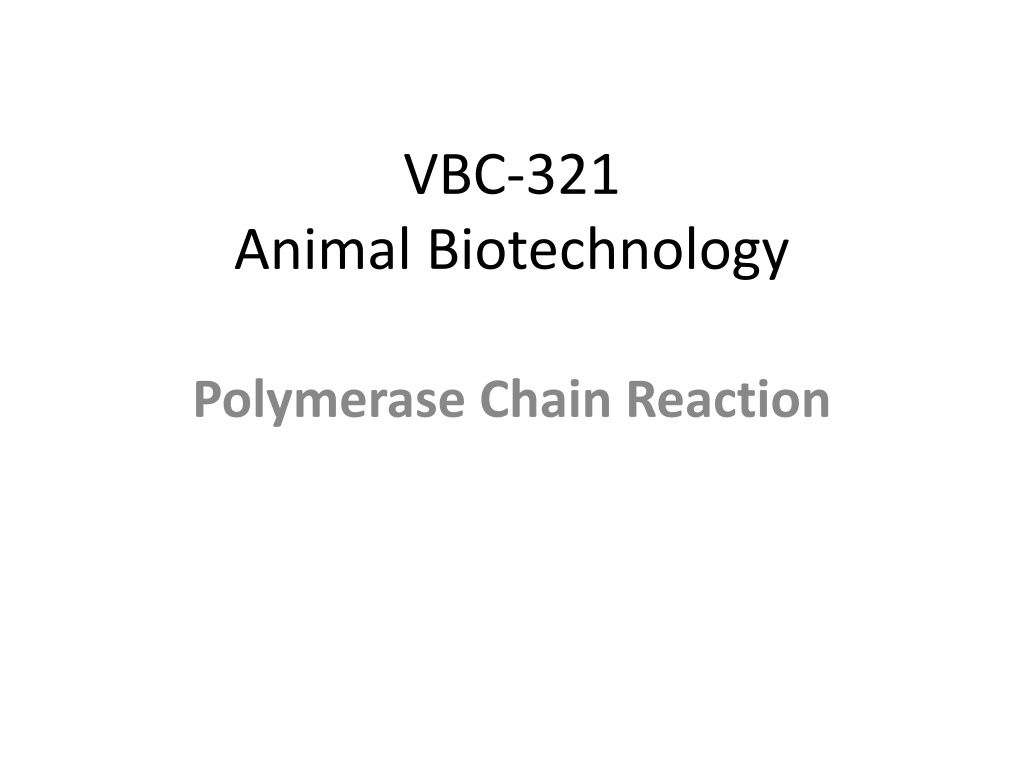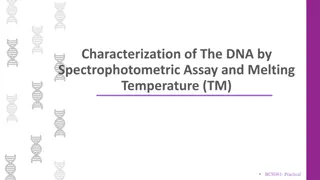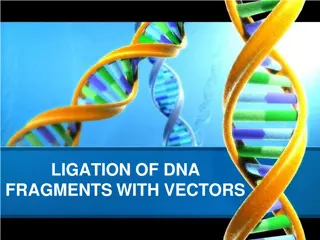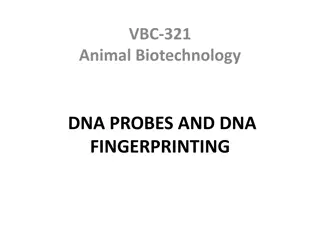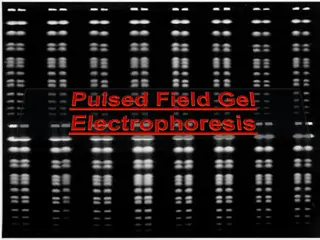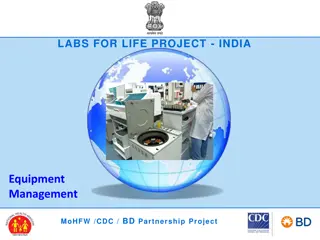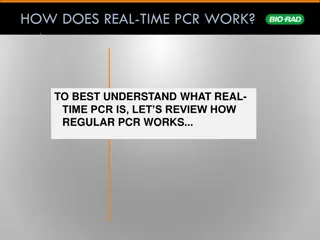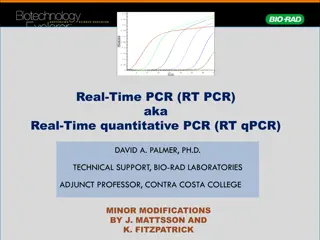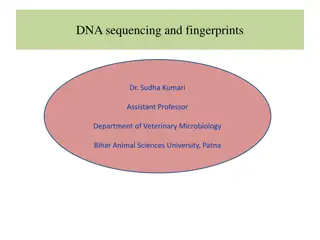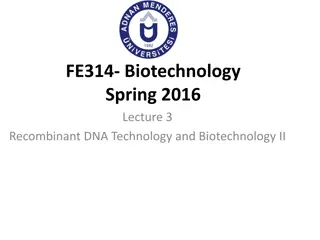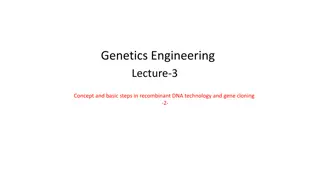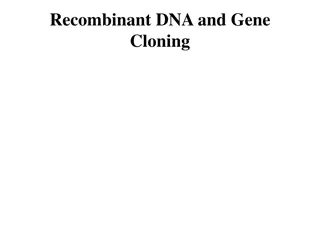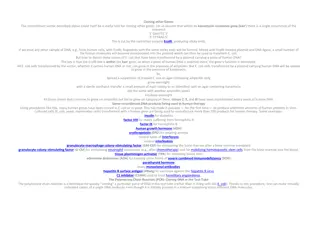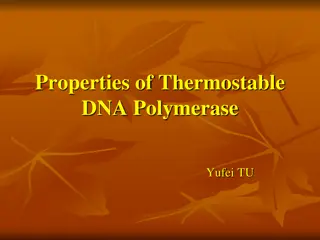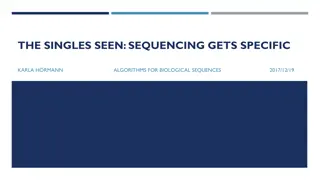PCR in Biotechnology: Amplifying DNA Sequences
Polymerase Chain Reaction (PCR) is a revolutionary technique in biotechnology invented by Kary B. Mullis in 1985. It enables the amplification of specific DNA sequences in vitro using oligonucleotide primers, DNA polymerase, template DNA, dNTPs, and buffer. PCR allows for the amplification of even minute amounts of DNA, making it a versatile tool in various fields, from forensics to research. The process involves denaturation, primer annealing, and polymerization steps. Primers, dNTPs, buffer components, and enzymes are essential for a successful PCR reaction. Understanding the components and steps of PCR is crucial for its effective application in genetic analysis and biotechnology.
Download Presentation

Please find below an Image/Link to download the presentation.
The content on the website is provided AS IS for your information and personal use only. It may not be sold, licensed, or shared on other websites without obtaining consent from the author.If you encounter any issues during the download, it is possible that the publisher has removed the file from their server.
You are allowed to download the files provided on this website for personal or commercial use, subject to the condition that they are used lawfully. All files are the property of their respective owners.
The content on the website is provided AS IS for your information and personal use only. It may not be sold, licensed, or shared on other websites without obtaining consent from the author.
E N D
Presentation Transcript
VBC-321 Animal Biotechnology Polymerase Chain Reaction
PCR PCR was invented by Kary B. Mullis in 1985 The PCR is an in-vitro,enzymatic amplification of a desired sequence of DNAusing a pair of oligonucleotide primers These primers are complementary to one end of the DNA target sequence These are extended towards each other by a thermostable DNA polymerase in a reaction cycle of three steps; denaturation, primer annealing and polymerization
COMPONENTS OF PCR Template Primers dNTPs Buffer Enzymes
Template PCR can amplify as little as one molecule of starting template herefore, any source of DNA that provides one or more target molecules can in principle be used as a template for PCR This includes DNA prepared from blood, sperm or any other tissue, from older forensic specimens, from ancient biological samples or in the laboratory from bacterial colonies or plaques as well as purified DNA
Primers Oligonucleotides used for priming, preferably 16-30 nts in length They should have similar G+C contents so that they anneal to their complementary sequences at similar temperatures The PCR primers should not have self complementary regions as this leads to hairpin formation The PCR primers should not complementary to each other this leads to primer dimmer formation If the DNA sequence being amplified is known, then primer design is relatively easy
dNTPs The 4 dNTPs, dATP, dGTP, dCTP and dTTP, used at saturating concentration (200 m M each) Buffer The standard buffer for PCR contains 50 mM KCl, 10 mM Tris.Cl and 1.5 mM MgCl2 pH is approximately 7.2 The presence of divalent cations is critical (Mg2+)
Enzymes Thermostable DNA polymerases from a number of thermophilic bacteria are used for PCR The most common is Taq polymerase from Thermus aquaticus It survives the denaturation step of 95 C for 1-2 min, having a half-life of more than 2hr at this temperature It carries a 5 -3 polymerization dependant exonuclease activity, but lack in 3 -5 exonuclease activity (proof reading) Hence, it is more prone for introducing errors There are high-fiedality thermostable enzymes with 3 -5 exonuclease activity. e.g., Vent polymerase, pfu polymerase
PCR CYCLES PCR involves a repetitive series of temperature cycles. Each reaction cycle comprises of three stages Initial Denaturation : 94 C for 5 min for denaturation of whole DNA Denaturation : 94 C for 1 to 2 min Primer annealing : 40 C to 60 C for 1 min Extension : 72 C for 1to 2 min Final Extension: 72 C for 5- 15 min 35 cylcles
In the first cycle, the target DNA is separated into two strands by heating to 95 C- denaturation The temperature is reduced to around 55 C to allow the primers to anneal. The actual temperature depends on the primer lengths and sequences- primer annealing After annealing, the temperature is increased to 72 C for optimal polymerization which uses up dNTPs in the reaction mix and requires Mg2+ If PCR was 100% efficient, one target molecule would become 2n after n cycles. In practice, 20- 40 cycles are commonly used
APPLICATIONS OF PCR Genomic cloning Generating template for sequencing In-vitro mutagenesis Analysis of biological materials for forensic applications To study the evolutionary history in the field of molecular palaeontology Medical applications such as pre-natal diagnosis of diseases and sexing of embryos Detection of infectious diseases
